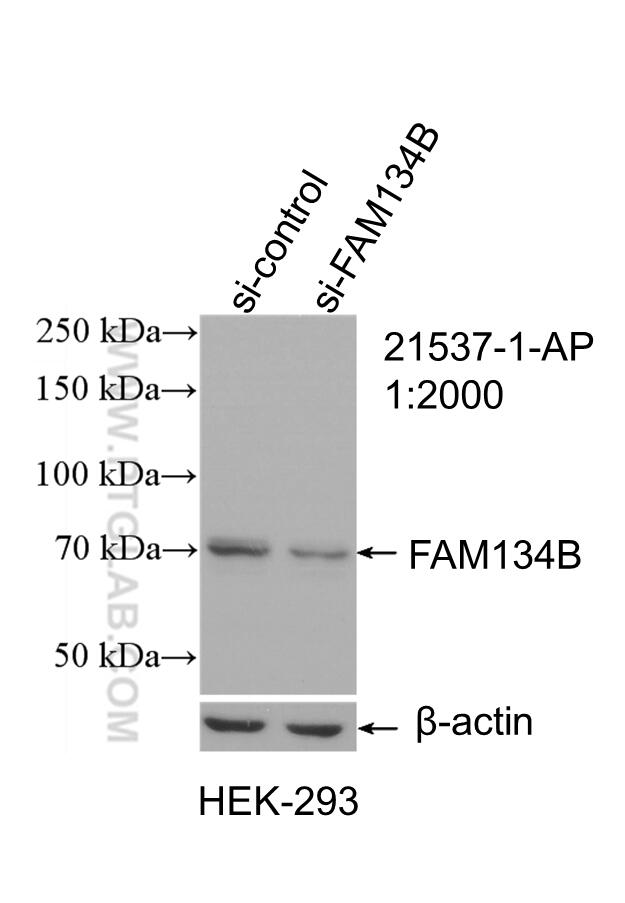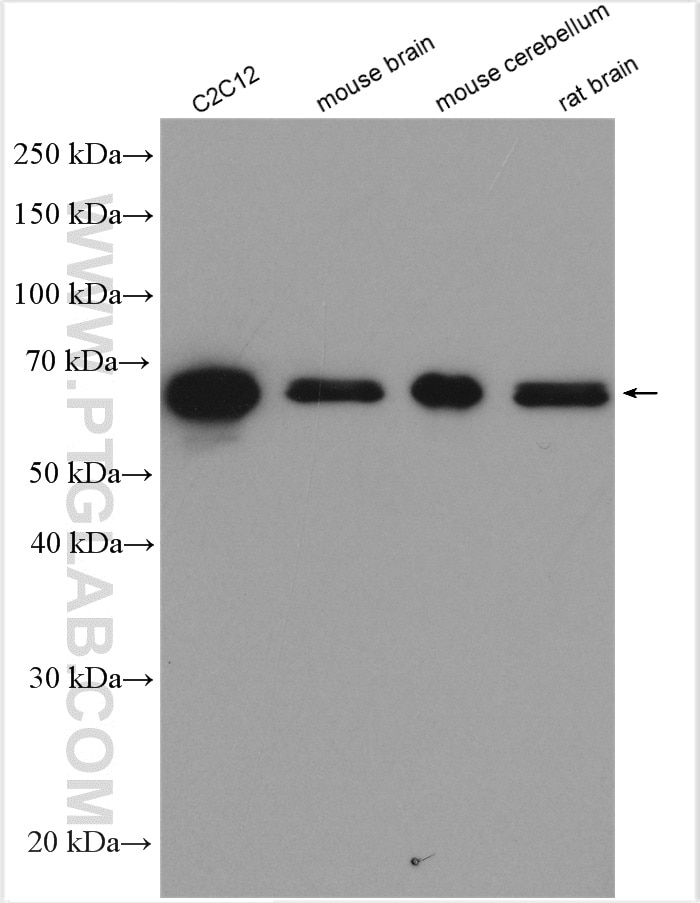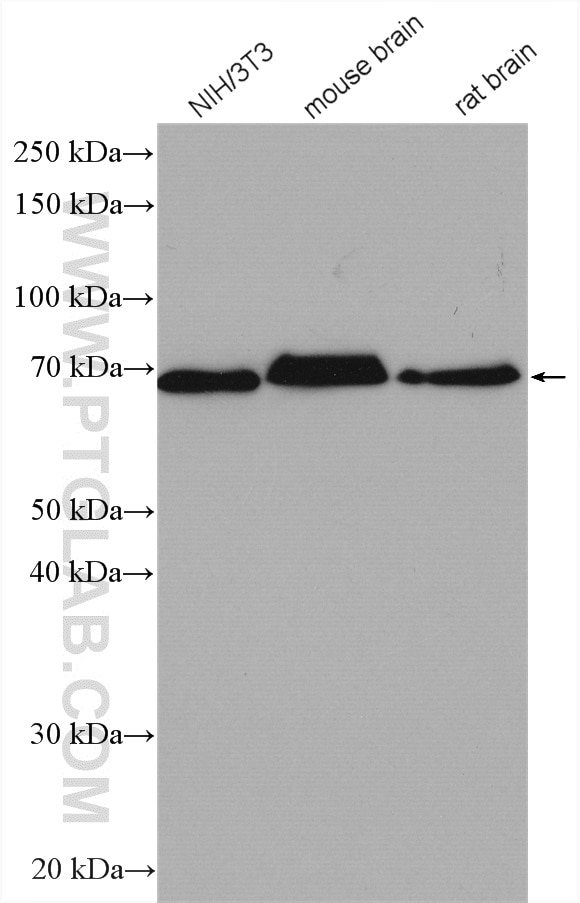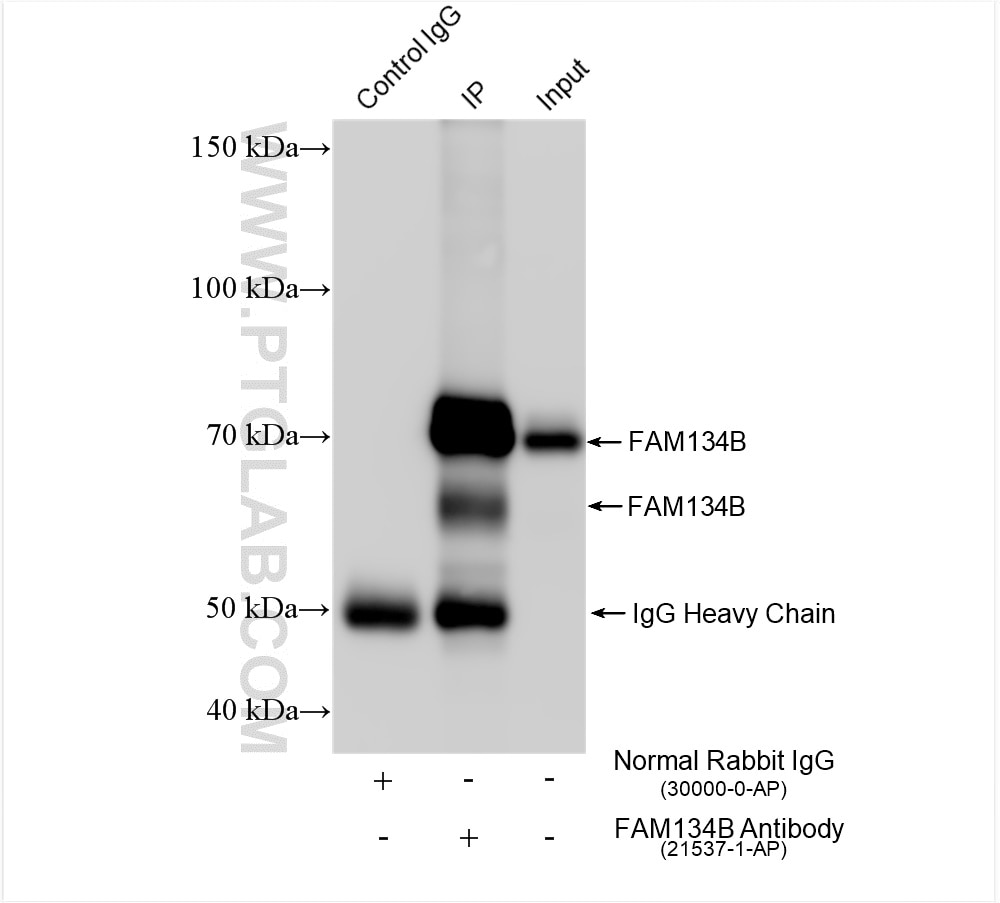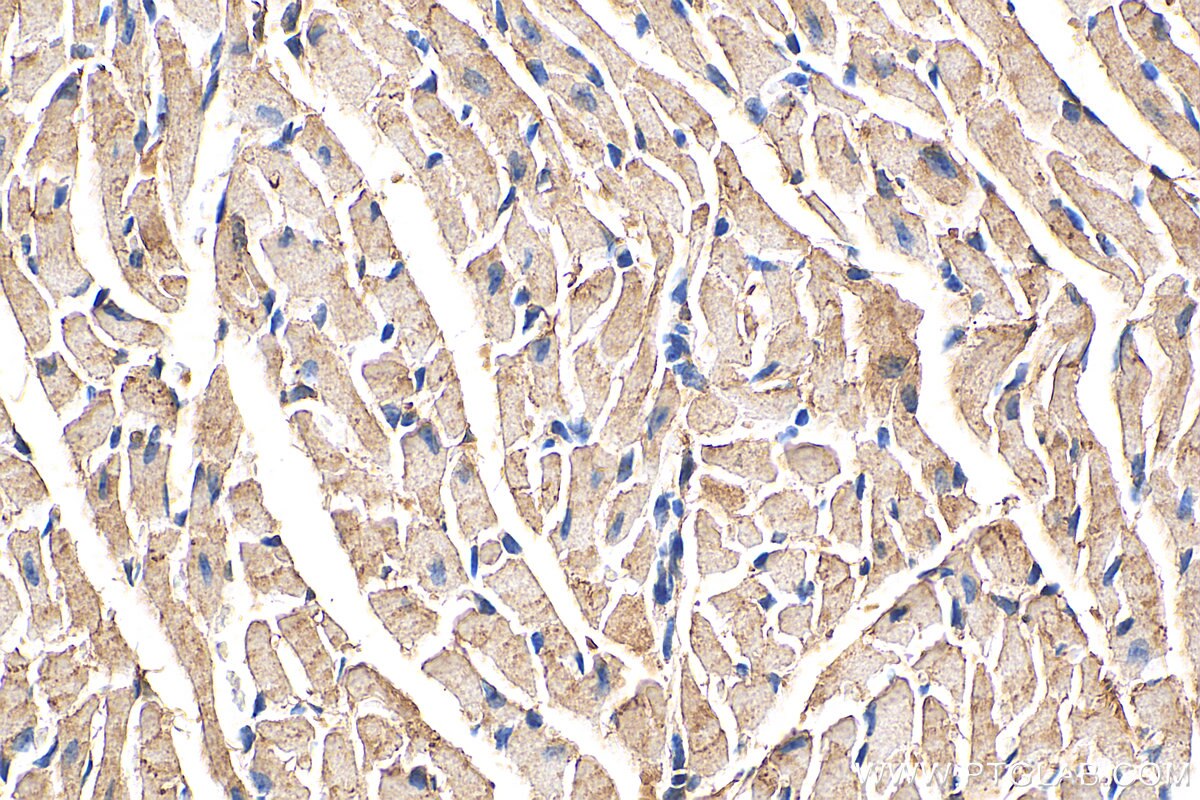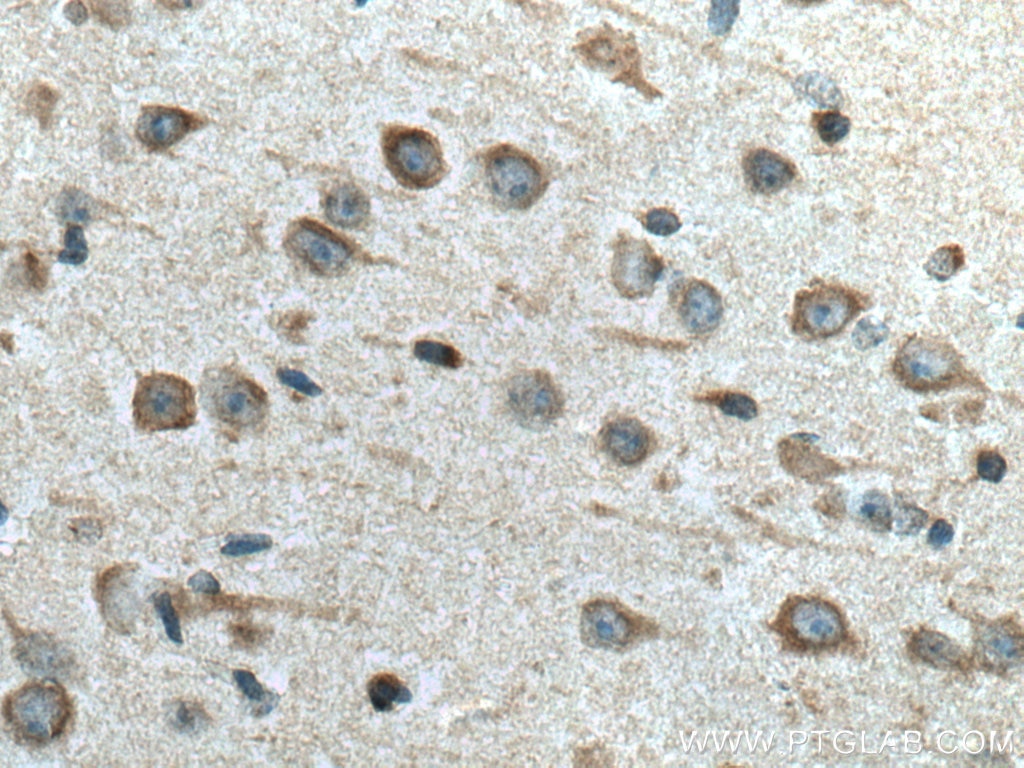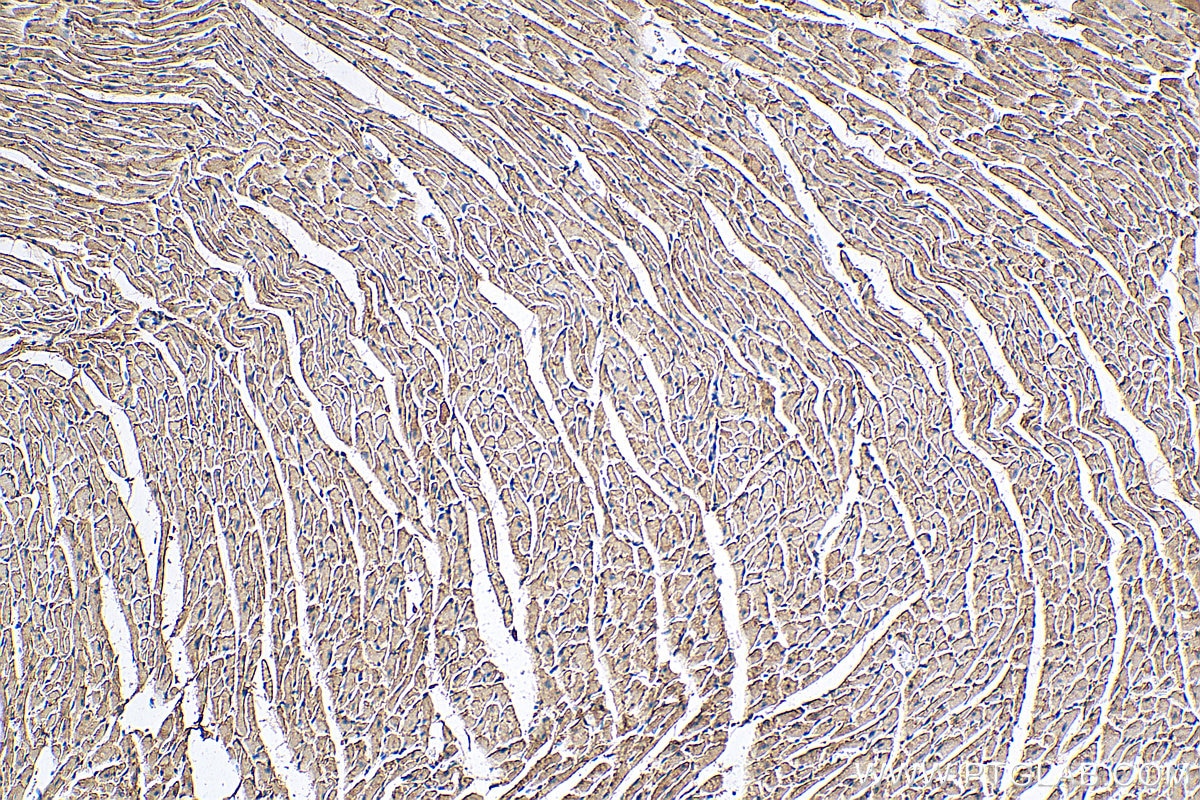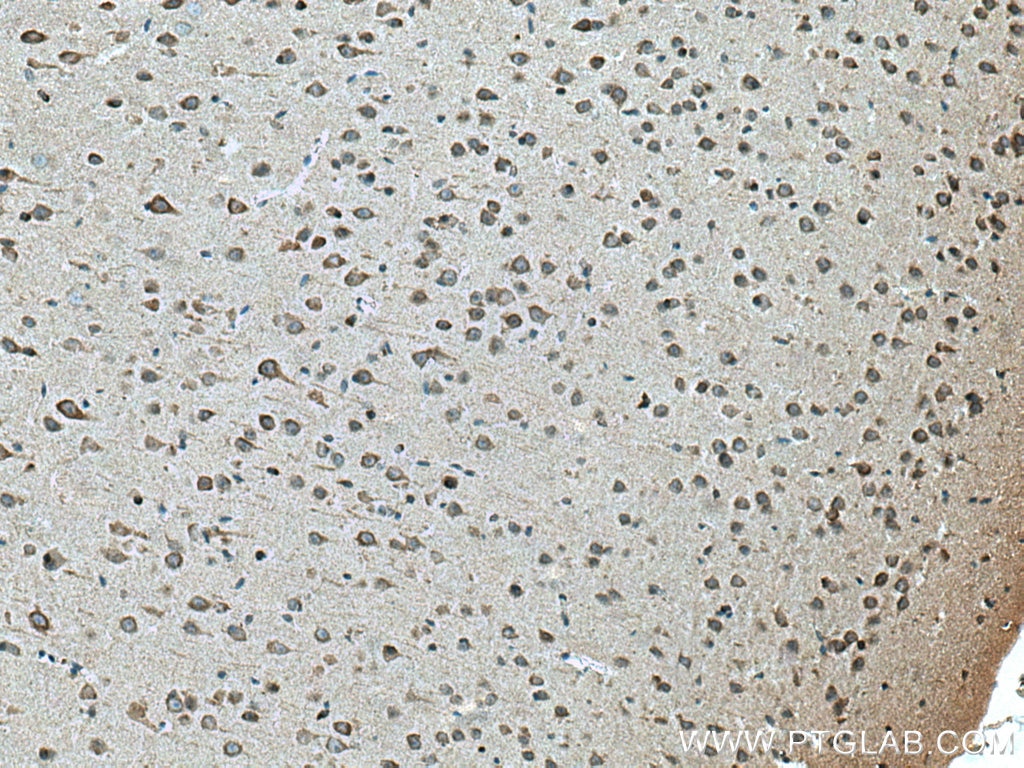Validation Data Gallery
Tested Applications
| Positive WB detected in | C2C12 cells, HEK-293 cells, rat brain tissue, mouse brain, mouse cerebellum |
| Positive IP detected in | Jurkat cells |
| Positive IHC detected in | mouse brain tissue, mouse heart tissue Note: suggested antigen retrieval with TE buffer pH 9.0; (*) Alternatively, antigen retrieval may be performed with citrate buffer pH 6.0 |
Recommended dilution
| Application | Dilution |
|---|---|
| Western Blot (WB) | WB : 1:2000-1:16000 |
| Immunoprecipitation (IP) | IP : 0.5-4.0 ug for 1.0-3.0 mg of total protein lysate |
| Immunohistochemistry (IHC) | IHC : 1:50-1:500 |
| It is recommended that this reagent should be titrated in each testing system to obtain optimal results. | |
| Sample-dependent, Check data in validation data gallery. | |
Published Applications
| KD/KO | See 12 publications below |
| WB | See 46 publications below |
| IHC | See 4 publications below |
| IF | See 16 publications below |
| IP | See 1 publications below |
Product Information
21537-1-AP targets FAM134B in WB, IHC, IF, IP, ELISA applications and shows reactivity with human, mouse, rat samples.
| Tested Reactivity | human, mouse, rat |
| Cited Reactivity | human, mouse, rat, pig, chicken |
| Host / Isotype | Rabbit / IgG |
| Class | Polyclonal |
| Type | Antibody |
| Immunogen |
CatNo: Ag16176 Product name: Recombinant human FAM134B protein Source: e coli.-derived, PGEX-4T Tag: GST Domain: 282-455 aa of BC030517 Sequence: ELDFSALCPKISLTVAAKELSVSDTDVSEVSWTDNGTFNLSEGYTPQTDTSDDLDRPSEEVFSRDLSDFPSLENGMGTNDEDELSLGLPTELKRKKEQLDSGHRPSKETQSAAGLTLPLNSDQTFHLMSNLAGDVITAAVTAAIKDQLEGVQQALSQAAPIPEEDTDTEEGDDF 相同性解析による交差性が予測される生物種 |
| Full Name | family with sequence similarity 134, member B |
| Calculated molecular weight | 497 aa, 55 kDa |
| Observed molecular weight | 65 kDa |
| GenBank accession number | BC030517 |
| Gene Symbol | FAM134B |
| Gene ID (NCBI) | 54463 |
| RRID | AB_2878879 |
| Conjugate | Unconjugated |
| Form | |
| Form | Liquid |
| Purification Method | Antigen affinity purification |
| UNIPROT ID | Q9H6L5 |
| Storage Buffer | PBS with 0.02% sodium azide and 50% glycerol{{ptg:BufferTemp}}7.3 |
| Storage Conditions | Store at -20°C. Stable for one year after shipment. Aliquoting is unnecessary for -20oC storage. |
Background Information
FAM134B, also known as the reticulophagy regulator 1 (RETREG1) or JK-1, is a member of the family with sequence similarity 134. FAM134B is an important ER-phagy receptor. FAM134B regulates the size and shape of the ER and participates in some ER-phagy-related processes(PMID: 33199694). FAM134B inhibition contributes to impair proteostasis in the ER due to the accumulation of misfolded or aggregated proteins, which in turn leads to compromised neuronal survival and progressive neuronal degenerative diseases. In addition, FAM134B mutations are common in patients with colorectal adenocarcinoma, and oesophageal squamous cell carcinoma(PMID: 29226326).
Protocols
| Product Specific Protocols | |
|---|---|
| IHC protocol for FAM134B antibody 21537-1-AP | Download protocol |
| IP protocol for FAM134B antibody 21537-1-AP | Download protocol |
| WB protocol for FAM134B antibody 21537-1-AP | Download protocol |
| Standard Protocols | |
|---|---|
| Click here to view our Standard Protocols |
Publications
| Species | Application | Title |
|---|---|---|
Nat Commun AMFR-mediated Flavivirus NS2A ubiquitination subverts ER-phagy to augment viral pathogenicity | ||
Mol Cell Cells Deploy a Two-Pronged Strategy to Rectify Misfolded Proinsulin Aggregates.
| ||
Nat Commun Coordinate regulation of mutant NPC1 degradation by selective ER autophagy and MARCH6-dependent ERAD. | ||
Dev Cell Calnexin controls TrkB cell surface transport and ER-phagy in mouse cerebral cortex development | ||
Autophagy Mass spectrometry proteomics reveals a function for mammalian CALCOCO1 in MTOR-regulated selective autophagy. |

